Solvent Delivery Unit
Nexera Series
LC-30AD Solvent Delivery Unit
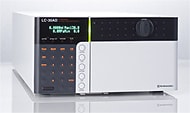
LC-30AD
This parallel double-plunger model provides superior performance at micro flow rates, and enables stable delivery over a wide range of flow rates, from 0.0001 to 3.0000 mL/min (with a maximum operating pressure of 130 MPa) or from 3.001 to 5.000 mL/min (with a maximum operating pressure of 80 MPa). Its ultrahigh-pressure capacity allows using long columns packed with micro particles. It smoothly tracks settings and provides precise solvent delivery even for programs with sudden changes in concentrations, which is desirable for ultrafast gradient chromatography.
LC-20AB Solvent Delivery Unit
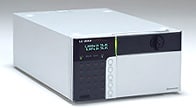
LC-20AB
LC-20AB Solvent Delivery Unit The LC-20AB is a binary high-pressure gradient solvent delivery unit that incorporates two 20AD solvent delivery systems. Its space-saving design enables achieving sophisticated two-solvent high-pressure gradients, for flow rates ranging from micro to conventional. Flow rate range: 0.0001 to 10.000 mL/min.
LC-20AP Large-Scale Preparative Solvent Delivery Unit
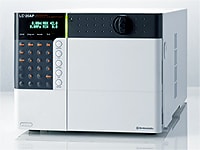
LC-20AP
The LC-20AP offers a high level of core performance for a wide range of applications, from analytical to large-scale fractionation. Even though it is especially well-suited to laboratory scale automated continuous fractionation using large-scale preparative columns (20 to 50 mm I.D.), it can also be used with analytical size columns (1 mL/min) for applications ranging from the evaluation of separation conditions and load capacities to validating the purity of fractionated liquids. The LC-20AP not only offers a high level of core performance, but also significantly reduces power consumption over previous products. Flow rate range: 0.01 to 150.0 mL/min.
LC-20AR Semi-Preparative Solvent Delivery Unit
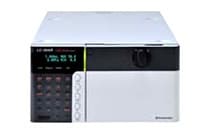
LC-20AR
(This product is non-correspondence in RoHS as of now.)
This parallel double-plunger solvent delivery unit can handle a wide range of applications, from semi-micro to semi-preparative delivery. Installing a recycle separation kit enables high-efficiency preparative recycling using a semi-preparative column. Flow rate range: 0.001 to 20.000 mL/min.
LC-20Ai Inert LC system
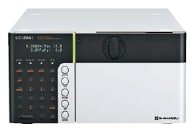
LC-20Ai
Incorporating the LC-20Ai solvent delivery pump for inert LC reduces baseline noise. The LC-20Ai features an improved solvent delivery control mechanism as the reaction reagent delivery pump of the bromate analysis system. This enables even higher-sensitivity bromate analysis.
News / Events
-
New Technical Report is available, Optimization of Supercritical Fluid Extraction Parameters for Vitamins D2, D3, and K1 from Pharmaceutical Preparations
New Technical Report is available, Optimization of Supercritical Fluid Extraction Parameters for Vitamins D2, D3, and K1 from Pharmaceutical Preparations
-
New Tips & Tricks is available, Automated Dilution and Preparation of Standard and Sample Solutions for Analysis
-
Shimadzu Corporation has released LabSolutions Detect, a software with AI Functionality to support Anomaly Detection for Liquid Chromatographs (LC).
LabSolutions Detect transforms your LC data review process by visualizing differences between accumulated reference data and daily sample data.
-
New Technical Report is available, A sustainable analytical approach for detecting extra virgin olive oil adulteration using Nexera™ UC
In this study, a fast, simple and green methodology was optimized to detect intentionally adulterated extra virgin olive oil EVOO with cheaper seed oils at different levels by means of subcritical fluid chromatography (subFC) with UV detection, followed by statistical analysis.
-
Shimadzu has released the new integrated LC system, i-Series.
The new i-Series integrated LC: Sustainable design. Reliable results. Uncompromising performance.
-
Core-shell Column: Analysis Basics Now Available.
Discover easy-to-understand insights into the fundamentals of analysis.


